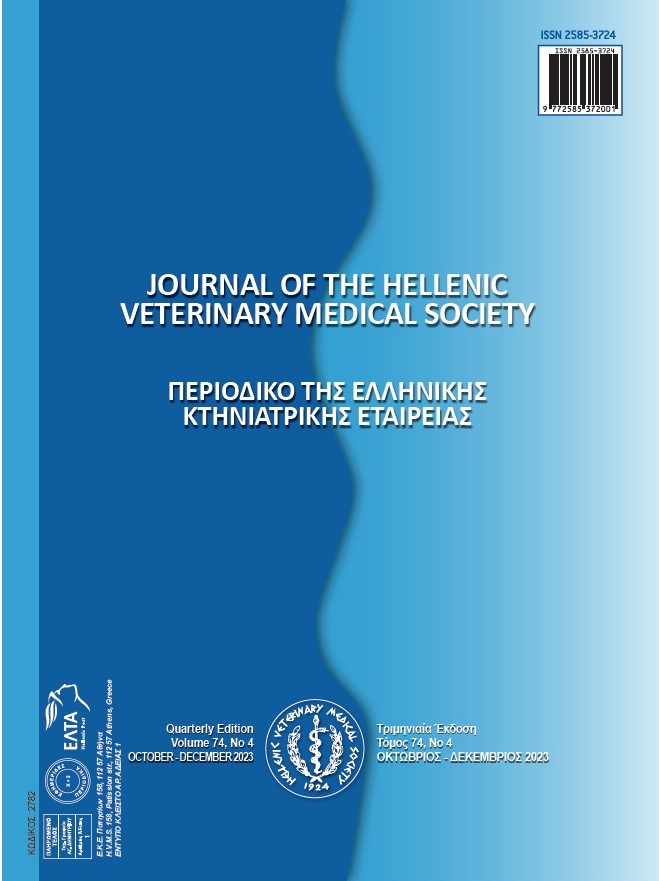Presence of genes encoding aminoglycoside-modifying enzyme (AME) and virulence factors in high-level aminoglycoside-resistant (HLAR) Enterococcus strains isolated from retail chicken meat in Turkey

Abstract
In this study, the presence of aminoglycoside-modifying enzyme (AME) and virulence factor genes were investigated in previously isolated 32 high-level aminoglycoside-resistant (HLAR) Enterococcus strains isolated from retail chicken meat in Turkey. At least one AME-encoding gene was detected in HLAR enterococci by polymerase chain reaction (PCR). The ant(6ʹ)-Ia was identified as the most prevalent (87.5%, 28/32) AME gene. The aph(3ʹ)-IIIa (78.13%, 25/32), ant(4ʹ)-Ia (68.75%, 22/32), aph(2ʹʹ)-Ib (62.5%, 20/32), aac(6ʹ)-Ie-aph(2ʹʹ)-Ia (21.88%, 7/32) and aph(2ʹʹ)-Ic (9.38%, 3/32) are the other detected AME-encoding genes in strains. The aph(2ʹʹ)-Id was found in none of the HLAR strains. The aph(2ʹʹ)-Ib and ant(6ʹ)-Ia were identified as the most frequently AME-encoding genes in high-level gentamicin-resistant (HLGR) and high-level streptomycin-resistant (HLSR) strains, respectively. Among the 32 HLAR strains, only E. faecalis MSE61.1 and E. avium MSE63.1 were found capable of hydrolyzing gelatine. All HLAR strains showed α-hemolytic activity except E. durans MG13.4 and E. casseliflavus MGM111.1, which were exhibited β- and γ-hemolytic activity, respectively. It was determined that all HLAR strains, except E. durans MGE13.1 and MGE63.1, contain at least one virulence factor gene. The efaAfm (87.5%, 28/32), acm (65.63%, 21/32) and gelE (37.5%, 12/32) were found to be the most prevalent virulence factor genes. HLAR enterococci strains that have the virulence factor genes may pose a risk to consumer health.
Article Details
- Zitationsvorschlag
-
Yalçın, M., Özden Tuncer, B., Akpınar Kankaya, D., & Tuncer, Y. (2024). Presence of genes encoding aminoglycoside-modifying enzyme (AME) and virulence factors in high-level aminoglycoside-resistant (HLAR) Enterococcus strains isolated from retail chicken meat in Turkey. Journal of the Hellenic Veterinary Medical Society, 74(4), 6441–6450. https://doi.org/10.12681/jhvms.30850
- Ausgabe
- Bd. 74 Nr. 4 (2023)
- Rubrik
- Research Articles

Dieses Werk steht unter der Lizenz Creative Commons Namensnennung - Nicht-kommerziell 4.0 International.
Authors who publish with this journal agree to the following terms:
· Authors retain copyright and grant the journal right of first publication with the work simultaneously licensed under a Creative Commons Attribution Non-Commercial License that allows others to share the work with an acknowledgement of the work's authorship and initial publication in this journal.
· Authors are able to enter into separate, additional contractual arrangements for the non-exclusive distribution of the journal's published version of the work (e.g. post it to an institutional repository or publish it in a book), with an acknowledgement of its initial publication in this journal.
· Authors are permitted and encouraged to post their work online (preferably in institutional repositories or on their website) prior to and during the submission process, as it can lead to productive exchanges, as well as earlier and greater citation of published work.



